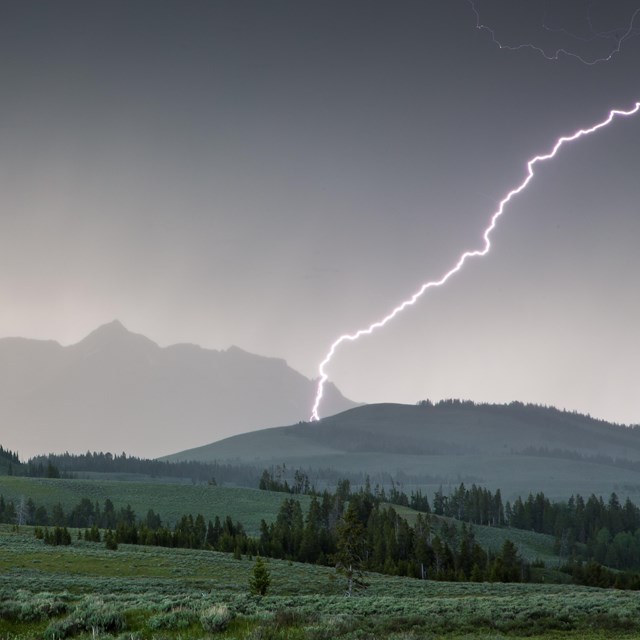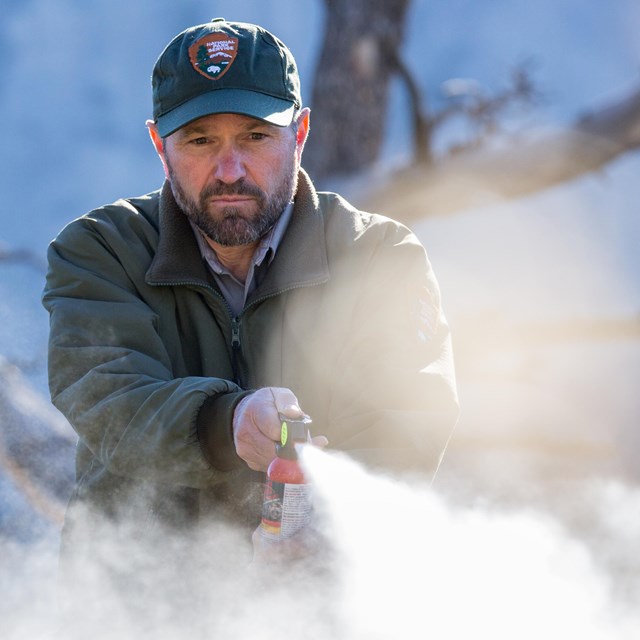Last updated: September 23, 2025
Thing to Do
Mud Volcano Trail

NPS / Addy Falgoust
Yellowstone itself is a volcano, and one of its most spectacular eruptions occurred 640,000 years ago. During the eruption, the land collapsed and left a large depression in the earth—the Yellowstone Caldera. This caldera filled with lava flows over hundreds and thousands of years creating the volcanic plateau that comprises much of the central part of the park.
Here at Mud Volcano you are close to one of the resurgent domes. The hills you see east of here comprise Sour Creek Dome. Resurgent domes are areas of active ground deformation, where the land moves up or down with the fluctuation of the magma chamber below. Scientists monitor these domes closely for information about ongoing volcanic activity.
Not surprisingly, many of the park’s geysers, hot springs, mudpots, and fumaroles are also found near or within the caldera.

NPS/Diane Renkin
Makings of a Mudpot
The fascinating and mysterious mud features found here are some of the most acidic in the park. This acidity plays a part in making them different from most hot springs and geysers. Hydrogen sulfide gas is present deep in the earth at Mud Volcano. Some microorganisms use this gas as an energy source. They help convert the gas to sulfuric acid, which breaks down rock to clay. Hydrogen sulfide, steam, carbon dioxide, and other gases explode through the layers of mud in dramatic or delightful ways.
In contrast, the more alkaline waters in most of Yellowstone’s geyser basins react with underground rock to line subsurface cracks with silica, creating the natural “plumbing” systems of geysers and hot springs.
Sights, Smells, and Sounds
Listen to the sounds, notice the smell, and observe the colors of the Mud Volcano area. Much of what you sense comes from sulfur. It is present in many forms: hydrogen sulfide creates the area’s infamous aroma, microbes convert the hydrogen sulfide into an acid that dissolves rocks and soil, and sulfur minerals paint the features in hues of yellow and shades of gray.
Hydrothermal Area Wildlife
As you walk from feature to feature, look for wildlife. You may see marmots, Clark’s nutcrackers, mule deer, and elk. In the spring, grizzly bears feed on winter-killed animals.
Be especially alert for bison. Bison and their young frequent this area in large groups and will travel on the walkways if they choose. If you encounter a bison, be sure to stay 25 yards or more away from them, even if that means you must return the way you came. These magnificent animals appear tame and slow but are actually wild and quick.
During any time of year, do not approach—and never feed—bison, coyotes, birds, or other animals. Wild animals are dangerous and unpredictable.
More on Day Hikes in Yellowstone
-
 Yellowstone Backcountry Situation Report
Yellowstone Backcountry Situation ReportCurrent conditions for Yellowstone National Park trails and campsites.
-
 Wildlife Safety
Wildlife SafetyLearn how to help keep yourself, and the wildlife you encounter, safe.
-
 Yellowstone Day Hikes
Yellowstone Day HikesLace up your boots and explore some of the over 1,000 miles of trails in Yellowstone National Park.
